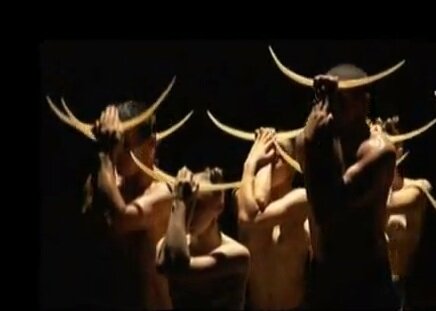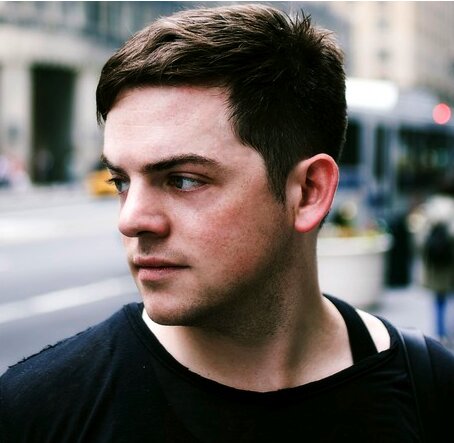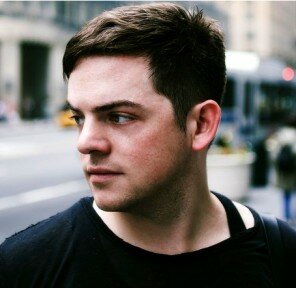Choreographer Marie Chouinard performed her own work solo for twelve years before forming her Compagnie Marie Chouinard, developing her highly original style. It’s no surprise, then, that in both works she presented on the UW World Series at Meany Theater Thursday night (repeated tonight and Saturday; tickets), dancers performed individually much of the time, though often not alone on stage.
The two works couldn’t be more different in atmosphere: 24 Preludes by Chopin, and The Rite of Spring, music by Stravinsky. Again, it’s no surprise that Chouinard calls these works by the titles of the music, because for her the music comes first. Her dancers recreate the music in bodily form. If you could hear nothing at all through your ears, you could sense the music through the the way they move, not just the the rhythm but the emotions the music conjures.
Thus, in 24 Preludes, she mirrors each brief prelude as contrastingly as did Chopin.
The dancers are clad in black swim suits, trunks for the four men, one-piece for the six women, with a black strap around each foot which is otherwise bare, and with some fantastical hairstyles including several mohawks. Chouinard uses hands, wrists and fingers frequently and effectively here, sometimes sharply angled, sometimes fluttering, suggesting flight. One prelude has arms raising Heil-Hitler style then going beyond and dissipating the memory, another has the dancers kicking a soccer ball around. Impressions like joy, toughness, ghostliness, athletes, humor, being imprisoned, spasticity all enter the mind.
Superbly trained athletes the dancers are, undeniably. There is huge energy here, as Chouinard uses the whole body in movements fluid or jerky, seemingly easy but requiring great flexibility. At the same time the dancers need to be closely attuned to the music as so much of what they do is dictated by the phrasing, the mood, the rhythms of each prelude. With considerable courage, given the needs of the dance, the company agreed to use live music provided by, in 24 Preludes, UW doctoral student in piano Brooks Tran.
The same courage applied for Rite, where the company used the UW Symphony Orchestra led by its music director Jonathan Pasternack. While the dancers are often performing alone in individual pools of light, there is still a feeling of primitive tribal dance, enhanced when they all come together as a group.
There’s cohesiveness of feeling here but each one is dancing to a personal vision, and above all it’s the music which drives the dance rising out of it. The vigor, the energy, the sexuality inherent without being sexy because it doesn’t seem to be directed at another person, all embody Rite’s music, which shocked the audience 100 years ago this year, and can still take us aback now. It’s merely an unemphasized part of the whole that the female dancers, like the men, wear only black swimming trunks, naked from the waist up.
One prop is used, sparingly. Five curved spikes like fingernails, about a foot long, sprout from a dancer’s hands, elbows and thighs, later from another dancer also. As as they move together, they undulate like jellyfish tendrils. Another time a group of dancers has only has one spike on each hand, a unicorn horn, a penis, a pair of horns.
The originality of Chouinard’s choreography shows starkly in there is one and only one movement, a leap, which appears to derive from classical ballet. Her lighting for Rites is equally imaginative, while for 24 Preludes, it’s achieved by the gifted Axel Morgenthaler.


